Welcome to this Newfoundland Travel Guide!
The province of Newfoundland and Labrador may not be high on the radar of travellers to Canada, but it certainly has a lot to offer. The east coast of Canada has unique nature, culture, experiences, and good food to offer.
My Journey to Newfoundland
I fly from Stuttgart, where my boyfriend and I are taking a trip. However, in Stuttgart, Ryanair is 4 hours late and I’m getting a bit pressed for time. After landing in Manchester, it becomes clear that I can’t make the next flight, this time to Dublin.
I don’t give up and run to pick up my bag. Time flies relentlessly and while waiting at the bag belt I notice that the clock reads… an hour less! This time shift, which I had completely forgotten about, really took the thorn out of my side.
Thus, I proceeded to Dublin, where I sought refuge in the airport’s children’s play area. But at night, someone breaks into my castle. For God’s sake, shouldn’t the children be asleep by this hour?
With the dawn, I board a Westjet flight to Newfoundland’s capital, St. John’s, a journey of less than 5 hours.
The History of Newfoundland and Cultural Attractions
St. John’s—pray do not confuse it with the city of Saint John in New Brunswick—is the capital of Newfoundland [pronounced “New-fun-land”] and Labrador, a province comprising the island of Newfoundland and the northeastern corner of the Labrador Peninsula. With an expanse of 405,202 square kilometers, this province has been a part of Canada only since 1949, previously held in the grip of Britain, who coveted its rich fisheries. Today, however, it is not fish but minerals that lie at the heart of its economy.
Though sparsely populated, with just over half a million souls calling it home, the majority reside on the island of Newfoundland, while a hardy few, mostly indigenous peoples, inhabit the more rugged regions of Labrador.
In Newfoundland you will hear a slightly different English, influenced by the many immigrant fishermen of Irish descent in the past. Yeah, it’s damn hard to understand them, I almost feel like I’m hearing Kiwi English for the first time.
The island lies in its own time zone, half an hour ahead of the rest of Canada, and four and a half hours behind Prague.
Here, one may find a hundred parks, recreational areas, and campsites, the crown jewel of which is Gros Morne National Park.
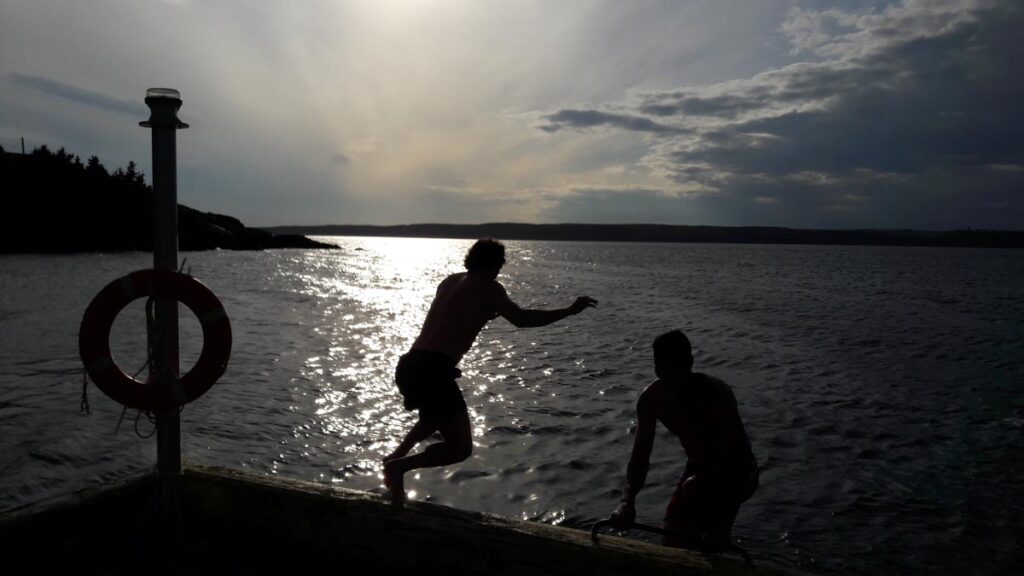
The original inhabitants of Newfoundland were the Beothuk people. After the arrival of the first Europeans, clashes over natural resources, particularly caribou, fish, and seals, arose between these two very different worlds. The Beothuk were forced to retreat inland, losing a significant portion of their livelihood. Combined with infectious diseases brought by European settlers, tuberculosis, and violent conflicts, this sadly led to their extinction.
The first Europeans to settle Newfoundland’s coast and establish fishing villages were of Irish origin. As a result, their English has a distinct accent, resembling an Irish dialect. Originally, the settlements were not connected by roads and were accessible only by water. For example, the village of Trout River, located in Gros Morne National Park, was accessible only by sea until relatively recently, and electricity was introduced there only a few decades ago. Nowadays, however, like most other villages, it is connected by roads to Trans-Canada Highway #1, which I had the pleasure of traveling in its entirety.
The locals are affectionately called Newfies (pronounced “Noo-fees”), and you may hear plenty of jokes about them from other Canadians. A large portion of the population once worked in the oil industry, but during the economic crisis, many of them lost their jobs.
Do you own a Newfoundland or a Labrador?
The canine breeds Newfoundland and Labrador hail from this very region, originally serving as working dogs for fishermen. The Labrador Retriever, in particular, was employed to retrieve fishing nets from the Labrador Sea.

Newfoundland Travel Guide: Practical Tips for Traveling
Transport in Newfoundland
In Newfoundland, renting a car is the best way to get around, as public transportation is quite limited. Having your own vehicle allows you to explore more of the breathtaking landscapes in this often-overlooked part of Canada.
My Hitchhiking in Newfoundland
Somehow I found myself on the outskirts of St. John’s, thumb outstretched, in a bid to catch a ride. My first solo hitchhiking ever. I was dropped off by a dad from the family I was volunteering with for a week, whereupon he tells me:
“Simona, I used to hitchhike when I was young, like 25 years ago. But now, nobody does it anymore. Nobody’s going to pick you up.”
“Perhaps,” I replied, “but I shall at least make the attempt.”
“Whatever, but I’ll probably pick you up tonight at the same place,” he said, wished me luck, and drove off.
So I put up a thumb and a sign saying “WEST” and I have so much adrenaline I could give it away. After a while, the car pulls up, I look at the driver, “I guess it’s okay”, I say to myself and get in.
With this “WEST” sign in my hand, I would eventually find myself traveling all the way to Calgary and, after the winter, also to Vancouver Island.
The people of Newfoundland are nice and are known all over Canada for this trait. They usually don’t let you stand by the side of the road for very long and their hospitality is hard to refuse. Though hitchhiking may take longer, it is undoubtedly more diverting than watching the countryside blur by from a bus window.


Accommodation in Newfoundland
For the frugal traveler, there are several options for accommodation:
- In the Wild: My preferred choice.
- Campsites: Expect to pay between $20 and $30.
- Couchsurfing: Stay with locals through platforms like Couchsurfing or BeWelcome.
- Hostels: Some, like the Skerwink Hostel, offer free lodging in exchange for a few hours of work each day.
- Other Accommodations: Booking.com and Airbnb are also worth exploring.
The renowned HI Hostels network is active here, and with an HI membership card, one can obtain discounts on both lodging and transportation.
For those seeking a longer-term abode, the prospects are quite favorable. I recommend consulting:
These sites not only offer housing options but also job listings, carpool opportunities, and a myriad of other services.
Work and Volunteering in Newfoundland
If Newfoundland’s charms ensnare your heart and you consider seeking employment here, getting a (good) job at St. John’s can be both a fast and slow process, depending on several factors, the main one being luck.
For those who wish to learn new skills while aiding others, volunteer opportunities abound through portals like Workaway, HelpX, and WWOOF. These offer a unique opportunity to immerse oneself in the local culture and see the island through the eyes of its inhabitants. I can personally vouch for Workaway, having used it extensively during my time in Canada.

Newfoundland Traditions and Local Cuisine: Fish and Chips
I can’t talk about Newfoundland without mentioning the food. A local favorite is Fish and Chips, traditionally made with crispy battered cod, served with fries and a splash of vinegar. Unless stated otherwise, the fish is almost always cod—a true staple in Newfoundland cuisine. Sourced from the abundant waters of the Grand Banks, cod has shaped the island’s rich fishing heritage for centuries, making it not just a meal, but a taste of Newfoundland’s history.

A cherished tradition on the island is the “Screech In,” a ceremony that involves downing a shot of the infamous Newfoundland rum, Screech, and bestowing a kiss upon a codfish. Those who endure this rite are rewarded with the title of honorary Newfoundlander.
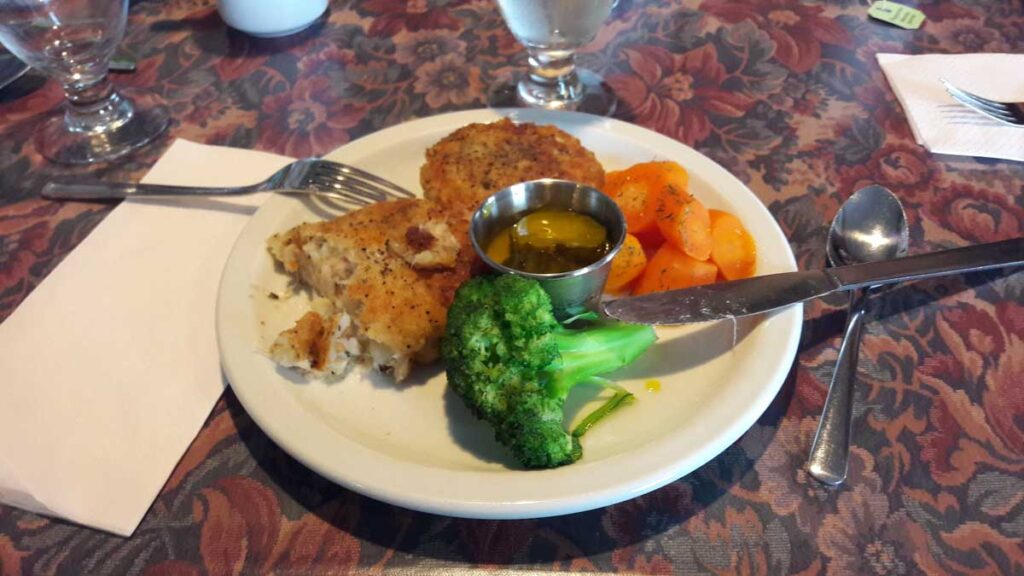
If you fancy a drink, I suggest a visit to Christian’s Bar on George Street, the liveliest thoroughfare in St. John’s, or the local Quidi Vidi Brewery, where they brew beer from glacial water. Newfoundland folk music is renowned, so be sure to catch a performance at one of the bars while savoring your libation. In early August, the Newfoundland and Labrador Folk Festival takes place, with the George Street Festival occurring in late July and early August.
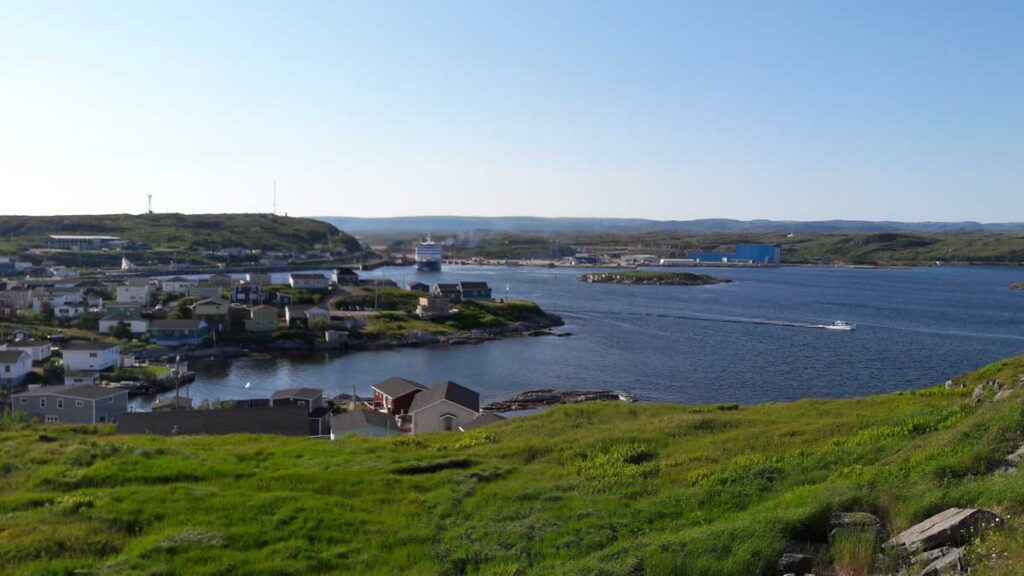
Did you know that from the coast of Newfoundland, you can catch a glimpse of French territory? It’s not mainland France, but the territory of St-Pierre and Miquelon, which is under French administration. This territory provided France with access to the rich fishing grounds near the Grand Banks, once abundant with cod but now nearly depleted.
You can reach St-Pierre by passenger-only ferry from the Newfoundland town of Fortune. A round-trip ticket costs just under $100 (visit saintpierreferry.ca for details). If you’re craving something French—perhaps a good bottle of wine—grab some euros and visit this far-flung piece of France.
The Best Places to Visit While Traveling in Newfoundland
1. The City of St. John’s and Its Landmarks
Most visitors to the island head to the capital city, St. John’s, famous for its colorful streets. You’ll likely be struck by how few people you see in the streets of this charming city, and this will probably be the case in other parts of the island as well. This is despite the fact that more than half of the island’s population lives in St. John’s and its surrounding areas.

I recommend visiting the local museum, The Rooms, which resembles traditional fish storage buildings in its design. Here, you can learn about the island’s history and even a bit about the Moravian Brethren. Admission is free every first Wednesday of the month from 6 PM to 9 PM.

In the harbor, you’ll find the Terry Fox Memorial, marking the starting point of his Marathon of Hope in 1980. The goal of this journey was to raise funds for cancer research. The run was meant to end in Victoria, BC, on the other side of the Trans-Canada Highway. Unfortunately, Terry was forced to stop near Thunder Bay, Ontario, as cancer had spread to his lungs.

2. Signal Hill and the East Coast Trail: The Best Hikes
Local highlights in St. John’s include Signal Hill and Cape Spear, the easternmost point of North America, located along the East Coast Trail. This trail stretches over 300 km along the coast, from Portugal Cove through St. John’s to Cappahayden, connecting around 30 communities. If you’re not up for the entire trek, I recommend the 3.7 km section from Cape Spear to the former fishing village of Blackhead.
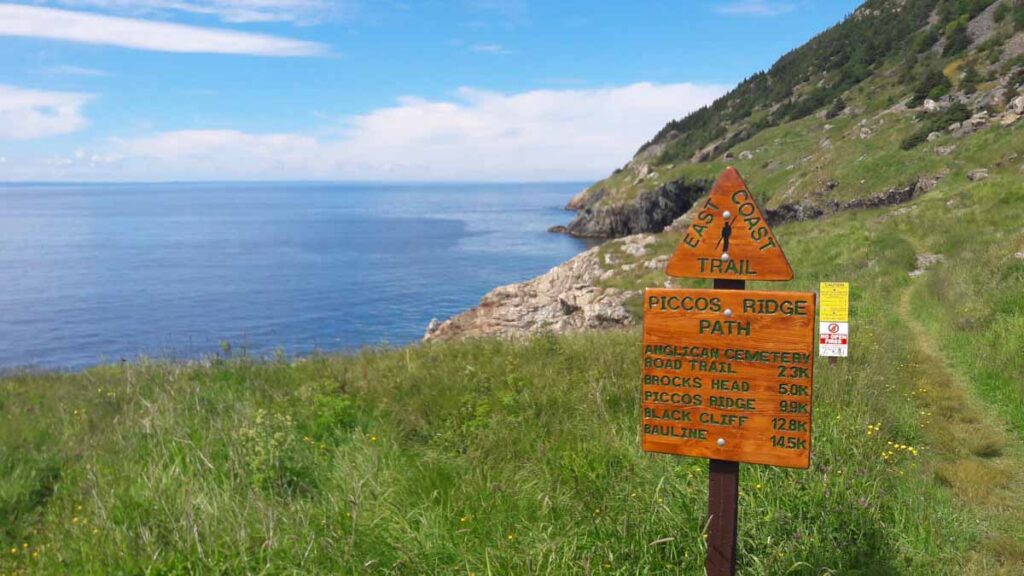
Since nice weather on the East Coast Trail is a rare occurrence, don’t forget to pack warm clothing, even in summer. Newfoundland’s weather can be quite surprising. During my visit in July, the average temperature was around 10°C (50°F).
3. Whale Watching and Puffin Spotting in Bay Bulls
From June to August, it’s the best time to observe local wildlife, and Bay Bulls is said to be one of the prime locations. The Witless Bay Ecological Reserve boasts the largest population of humpback whales in the world, several species of fin whales, and the largest colony of puffins in Eastern Canada (best spotted from mid-June to mid-July).
4. Mistaken Point Paleontological Site
South of St. John’s, near Cape Race, lies one of the world’s most famous paleontological sites – Mistaken Point. This 565-million-year-old seabed is home to fossilized remains known as the Ediacaran biota. Mistaken Point earned its name because sailors often confused it with nearby Cape Race in foggy weather, heading north expecting to find the harbor at Cape Race. Instead of a safe haven, they encountered sharp, treacherous rocks.
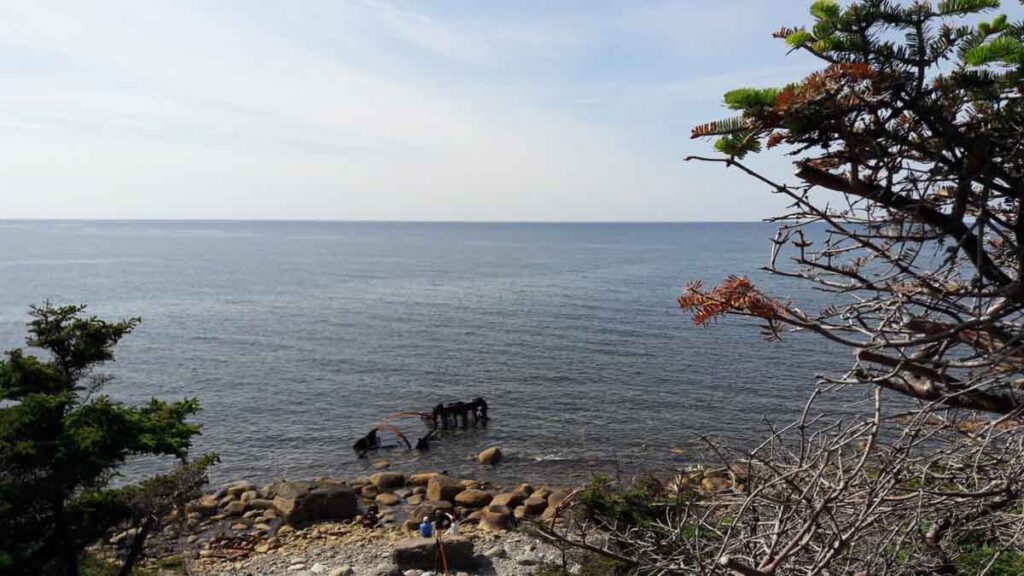
5. Bonavista Peninsula: History and Nature
West of St. John’s lies the Bonavista Peninsula, home to some of the oldest European settlements on the island. In 1497, explorer John Cabot landed here and claimed the territory for England. I recommend visiting the historic town of Trinity or the harbor at Bonavista, where you can see a historical replica of the Matthew, John Cabot’s ship.
From the nearby Bonavista Lighthouse, you can spot puffin colonies, floating icebergs, and whales. If you plan your visit for late June, don’t miss the Discovery Celebrations on June 24-25, marking the anniversary of John Cabot’s arrival.
6. Gros Morne National Park: The Natural Gem of Newfoundland
Newfoundland boasts countless natural wonders, but the biggest draw is undoubtedly Gros Morne National Park, a UNESCO World Heritage Site since 1987. Despite its status as a national park, it’s not nearly as crowded with tourists as other Canadian parks, especially those in the west, making it a peaceful place to clear your mind.
The area is a unique example of continental drift, where oceanic crust was pushed over continental crust—a reversal of the usual process. Later glacial activity shaped the stunning landscape, creating coastal lowlands, alpine plateaus, fjords, glacial valleys, steep cliffs, waterfalls, and numerous pristine lakes.
The park is home to a variety of wildlife, including black bears, foxes, lynx, caribou, moose, squirrels, and various bird species. You may even have the chance to spot whales along the coastline.

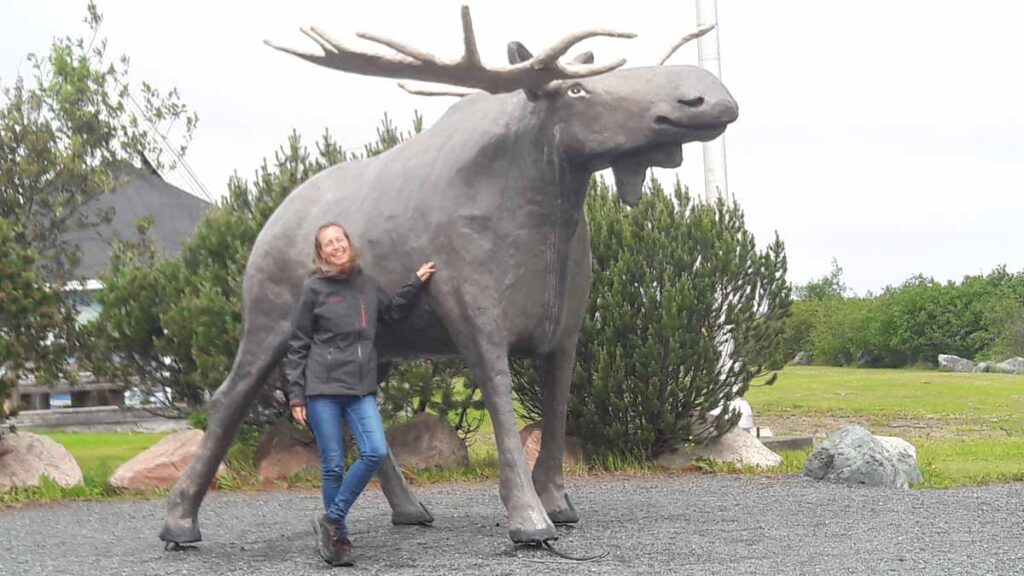
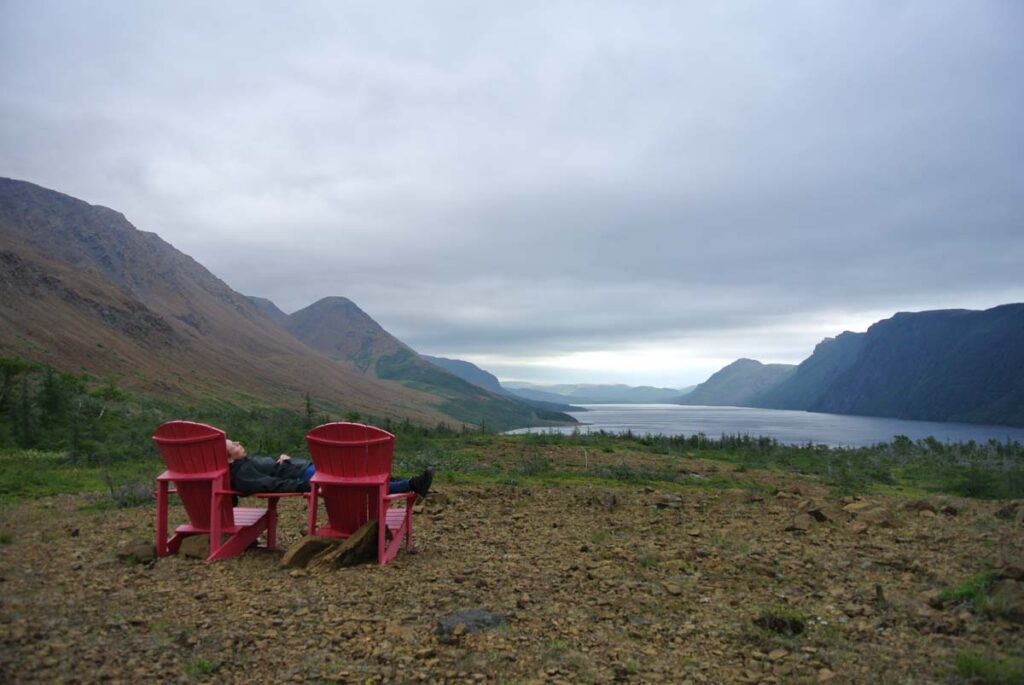
The image shows the end of the Trout River Pond Trail, which begins at a rest area in the village of Trout River and follows the 9-mile-long Trout River Pond, a body of water that was once a sea inlet. This trail is relatively quiet, with few other tourists, and offers a unique view of the Tablelands Plateau from the other side.
The flat peaks here form an extensive alpine plateau at an elevation of about 600 meters above sea level. The plateau is part of the weathered mantle rock, which typically lies beneath the Earth’s crust. It is made up of toxic peridotite, a rock type that is usually only found in the Earth’s mantle. This unique composition prevents most plants from growing in the area.
The mantle rock was brought to the Earth’s surface due to an ancient collision between the proto-continents of North America and Euroafrica. Thanks to the arrangement of rock formations of different ages, this site is ideal for studying the theory of plate tectonics.
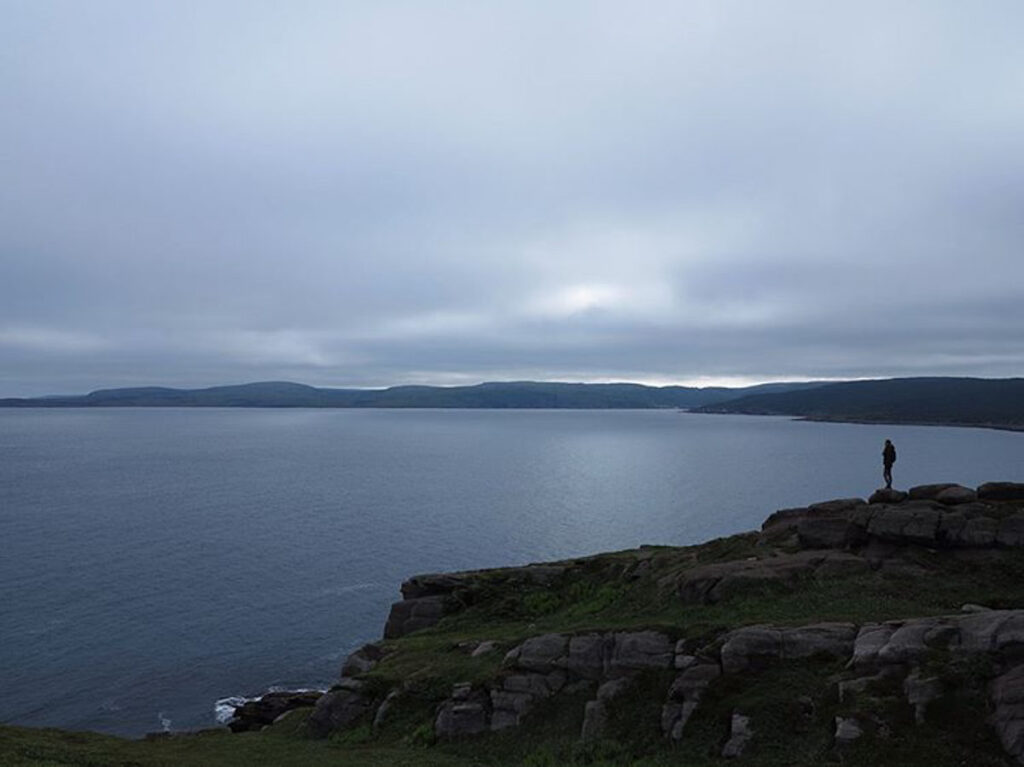
The nearby 9-kilometer Green Gardens Trail is also worth a walk, especially if the weather isn’t in your favor. The Tablelands Trail is shorter (about 2.5 miles) but tends to attract more visitors. On the bright side, this trail offers the chance to take a guided walk with a geology expert.
You can climb the park’s highest mountain, also named Gros Morne, which is the second-highest peak in Newfoundland, in a single day. The views of the surrounding landscape are said to be breathtaking, but clear weather is crucial if you don’t want to be staring at your feet the whole time—a real challenge in Newfoundland’s unpredictable climate. There’s also a campsite at the summit where you can spend the night.
The best place to restock supplies in the park is Rocky Harbour. Nearby, in Norris Point, you’ll find The Bonne Bay Marine Station, which was established to study the area’s diverse marine life.

7. Western Brook Pond: Fjord and Boat Tours
The most iconic and frequently photographed location in the park is Western Brook Pond, a fjord carved out by glaciers in the past. Its towering cliffs reach over 600 meters, with several waterfalls cascading down their sides. You can reach this stunning attraction after about a 45-minute walk from the Viking Trail, often accompanied by other tourists. If you want to explore it further, you can book a boat tour.
If you visit in June, you’ll witness blooming rhododendrons. Summer is the best time for hiking and wildlife watching, while fall transforms the landscape with vibrant colors—just like anywhere else, but uniquely beautiful here. In summer, don’t miss the Gros Morne Theatre Festival, a cultural highlight of the region.
8. Vikings in L’Anse aux Meadows: The Oldest European Settlement in Canada
On the west coast, after a few hours’ drive from Gros Morne National Park along the Viking Trail, you’ll arrive at the UNESCO World Heritage Site L’Anse aux Meadows, celebrated as the oldest European settlement discovered in North America. In 1960, the Ingstad couple unearthed several Viking dwellings dating back to around 1000 AD.
A number of these houses have been reconstructed using traditional Viking techniques, and staff in Viking costumes can guide you through them, demonstrating the traditional Viking way of life.
9. Red Bay: UNESCO Heritage Site and Fishing History
The province is home to another UNESCO World Heritage Site, the Red Bay National Historic Site, which can be reached from Newfoundland by taking a ferry from St. Barbe to Blanc Sablon in Quebec. From there, it’s just a one-hour drive by car.

The Skin Boot Church was funded by money raised from the sale of leather boots in the 1820s. Nearby, you’ll also find a lighthouse and a bank in the middle of nowhere, adding to the unique charm of the area.
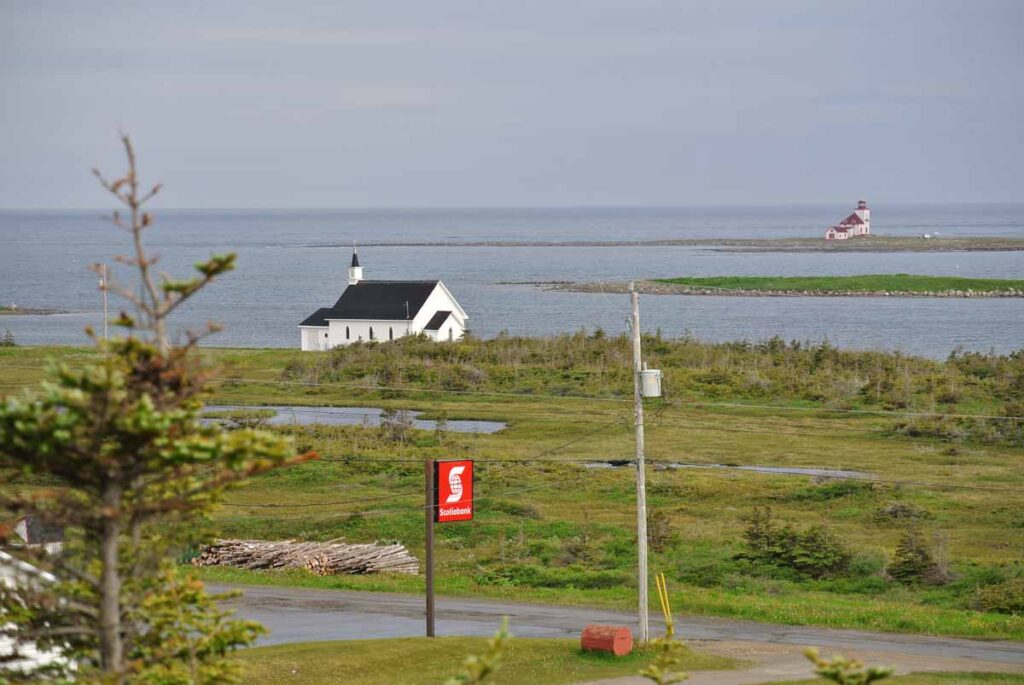
10. Fogo Island: Festivals, Nature, and Icebergs
From what I’ve heard, I can also recommend visiting Fogo Island, which, along with St. Anthony, is fantastic for spotting drifting icebergs. Check out icebergfinder.com—these icebergs take three years to travel from Greenland to Newfoundland.
In August, don’t miss the Brimstone Head Folk Festival, a celebration of local music and culture.
Tips for Maps and Travel Guides
If you prefer printed guides, I can recommend the Rough Guide for Newfoundland and Labrador. For digital maps, Mapy.cz and Maps.me are excellent choices, offering offline maps perfect for exploring less-traveled areas. Another great app is Canada Topo Maps Free, which provides detailed topographic maps for hiking enthusiasts.

